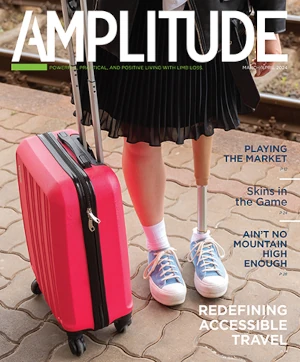Since walking in the community is essential to participate in work, leisure, social activities and family roles, a study explored potential barriers and enablers for people with lower-limb amputations who use a prosthesis to walk in public. The study found many barriers, but enablers were also identified.
Three focus groups (n = 14 participants) using purposive sampling were conducted, and three investigators analyzed transcripts using thematic content analysis. Themes aligned with the International Classification of Functioning, Disability and Health domains.
The study, published online April 13 in the Journal of Disability and Rehabilitation, found that barriers related to body function and structure included prosthetic function, residual limb integrity, phantom limb pain, and other medical issues, with optimal prosthesis functioning and adequate physical fitness identified as enablers. Personal barriers included challenges adjusting to change, whereas personal enablers included being able to adjust to change, having a positive attitude, goal setting, and having a purpose for walking in public. Environmental barriers were physical (e.g., terrain, crowds, climate) and social (e.g., unwanted attention and finances). Environmental enablers included aids, transport, preparation, social support, and finances. The study found that although rehabilitation for people with lower-limb amputations should continue to optimize body function and structure such as strength, fitness, pain, and prosthetic function to help prepare individuals for walking in public, personal and environmental factors should also be addressed.
Optimizing an individual’s personal enablers may include strategies to assist with adjusting to change, setting goals, and instilling a positive attitude toward and seeing a purpose for walking in public. Enhancing environmental enablers and minimizing environmental barriers to walking in public may be possible through environmental planning (e.g. infrastructure such as lifts), social awareness, and education, the study found.



